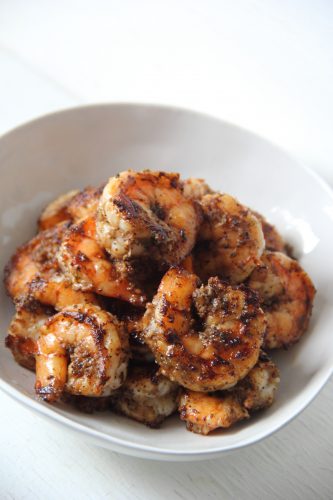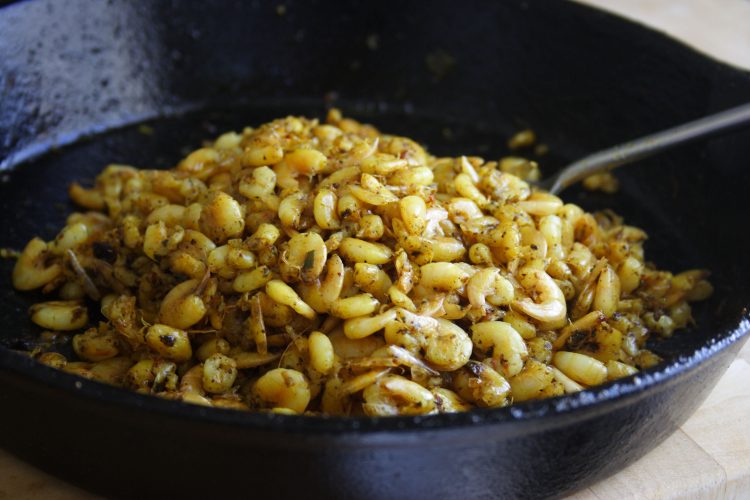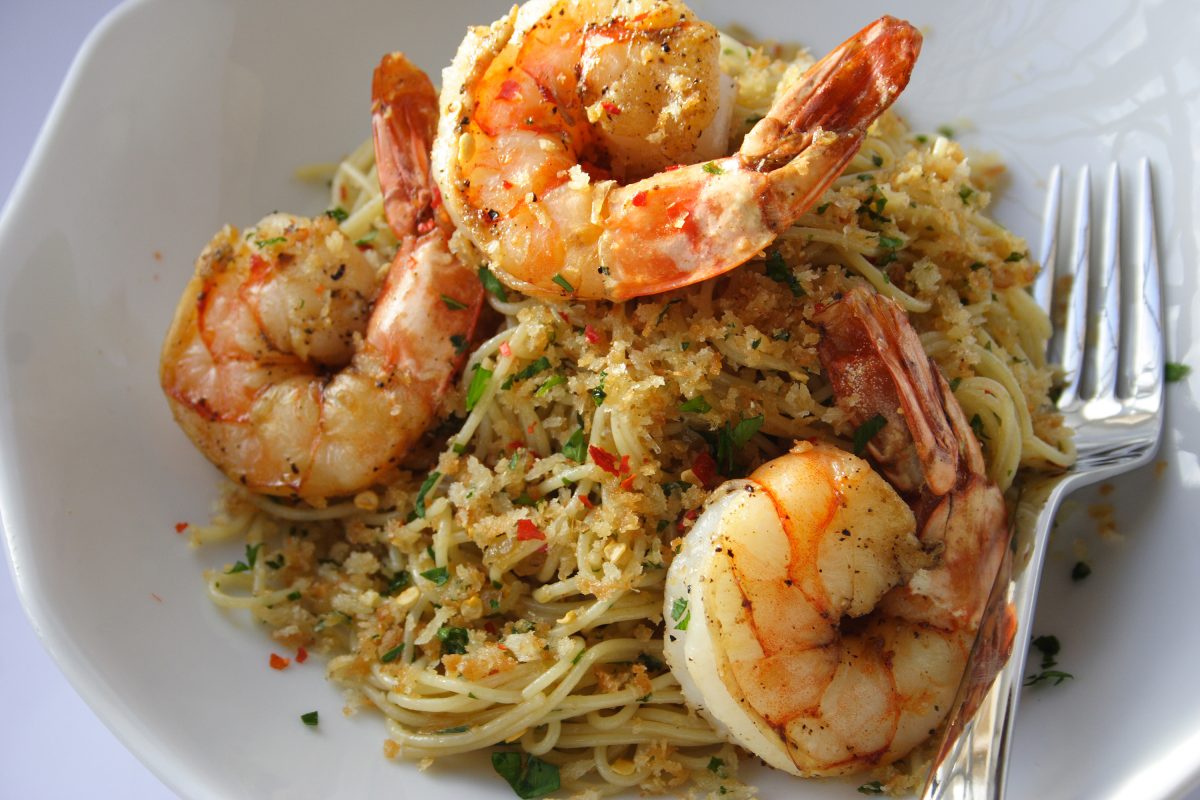
Many people shy away from cooking certain ingredients, frustrated that they never turn out the way they want them to; shrimp is one such ingredient. Fears grow that they do not know how to cook it and so they avoid cooking it altogether. I have said often enough, the best way to cook something is the way you like and prefer it; I believe that there is no right or wrong, however, as home cooks we are always looking to improve. And that is the context in which I am addressing the question of how to cook shrimp, that was put to me by a reader.
The main complaint about cooking shrimp is that it ends up being hard, like rubber; eraser. That result comes from overcooking the shrimp.

In Guyana, a regular way to cook vegetables is “fried” (sautéed) with white-belly (baby) shrimp. On any given day you can hear someone say that they’ve cooked pumpkin and shrimp, okra and shrimp, bigan (eggplant) and shrimp, karaila (bitter gourd/melon) and shrimp, callaloo (spinach) and shrimp and so on. Another favourite way to cook this variety of shrimp is bunjal – dry curry. This variety of shrimp – tiny – takes only seconds to cook, however, because of our style of cooking, the shrimp ends up being tiny chewy bits amongst the vegetable. Years ago, whilst on a trip back home (to Guyana), it was a revelation and an ah-ha moment when I saw how my mom cooked shrimp with vegetables. The meal that day was dhal, rice and fried callaloo (spinach) with shrimp.
I walked into the kitchen to get something and noticed that the shrimp was already cooked and sitting in a bowl while the spinach was cooking in the karahi (wok-like pan) on high heat – the water quickly evaporating from the spinach. How curious I thought – I have always put the shrimp in after sautéing the aromatics and then adding the vegetables to the mixture to cook. But the more I thought of it, my mother’s method of approach made perfect sense! (I can hear you saying that mothers are always right!) She quickly cooked the shrimp first on high heat and set it aside while the vegetable took it’s time to cook. Mommy added the shrimp to the callaloo when it was seconds from finished cooking, folding it into the wilted greens. This meant that the shrimp would not be overcooked and would remain plump.
So, here’s what to do when cooking shrimp with vegetables. Once the shrimp has been rinsed, let it drain well in a colander and then spread it on a paper-towel lined plate and pat it dry with additional paper towels, pressing lightly to remove the excess water.
Heat oil in the pan that you will be using on high heat. You want it very hot, almost smoking hot. Add the shrimp to the pan and spread it out in one layer. Do not stir it as this causes agitation leading to moisture developing. Let it cook for 30 to 40 seconds (depending on the quantity and if using white belly baby shrimp). You will see the shrimp change colour becoming white, opaque; remove it from the pan with a slotted spoon. Transfer it to a bowl or plate and sprinkle with a little salt if you like. Continue cooking your vegetables as you would – sautéing aromatics etc. About 1 minute before the vegetables are done cooking add the shrimp back to the pan, stir to incorporate and let cook for no more than 30 to 45 seconds. The shrimp will, at this stage, absorb the seasoning and flavour of the vegetables. Use this method if you are using baby shrimp or large shrimp with vegetables.
What about cooking large shrimp in other ways, such as grilling or with pasta or curried?
Use the following as an approximate guide:
- Medium shrimp cook for 30 – 35 seconds
- Large shrimp cook for 1 minute (30 seconds per side)
- Jumbo shrimp cook 2 minutes (1 minute per side)
Using these cooking times as a guide will assist you greatly in knowing how and when to add your shrimp to various dishes. Also, you can remove the shrimp 15 seconds before the recommended cooking time because it will finish up with carryover cooking. Carryover cooking is when food retains heat and continues cooking even after being removed from the source of heat.
Another important thing is this – be sure to always, always pat the shrimp dry even if

you are going to use a wet marinade with which to season. If you don’t pat the shrimp dry, the excess moisture will cause the shrimp to start stewing and you don’t want that, that is what contributes to the shrimp overcooking and becoming hard.
If you’re cooking curried shrimp (meaning that you want it with a little sauce), sauté your curry paste, add your shrimp and cook it for 30-seconds less than the suggested time. Remove the shrimp from the pan, set it aside, and add your liquid – water, broth or coconut milk. Let the sauce reduce to your desired consistency and then add back the shrimp with whatever drippings and finish off the cooking (about 1 minute). If on the other hand you are making bunjal shrimp – dry curry, when you add the shrimp, let it cook for the prescribed time and then remove the pan from the hot burner.
When grilling, you can use a dry rub or marinade to season. Cook according to the time guide I have suggested. For a dish such as shrimp linguini, sauté your aromatics in some butter and oil, add your shrimp and cook based on the time guide suggested. Add the shrimp sauce to the drained pasta, toss and serve.
A couple other tips about cooking shrimp:
• Cooking the deveined shrimp in its shell helps to keep it plump and moist and gives a more pronounced shrimp flavour
• Leaving the tail on at the end of the shrimp will ensure that it does not curl up when cooking. It makes for a more attractive presentation and is easy to pick up when served as finger-food.
Cynthia
cynthia@tasteslikehome.org





